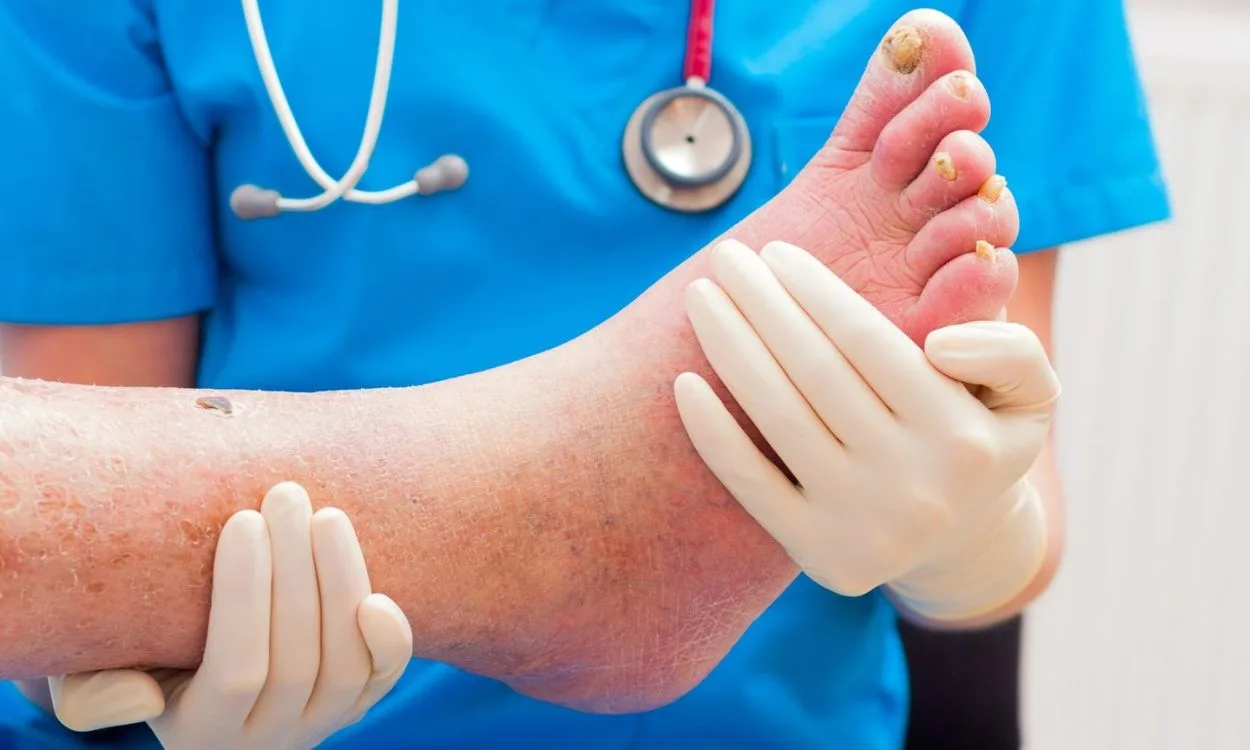Diabetic Foot Infection: Causes, Treatment, and Prevention
Introduction:
Living with diabetes requires careful management of blood sugar levels to prevent complications. One such complication is diabetic foot infection, which can be severe if not treated promptly. In this article, we will delve into the causes, treatment, and prevention of diabetic foot infections, with a focus on the Indian population. Additionally, we will explore how Fitpaa, an innovative health and fitness app, can support individuals in managing diabetes and overall health.
I. Understanding Diabetic Foot Infection:
A. Causes:
Diabetic foot infections occur due to a combination of factors, including:
1. High blood sugar levels: Elevated glucose levels can impair the body’s ability to fight off infections and slow down the healing process.
2. Peripheral neuropathy: Nerve damage caused by diabetes can reduce sensation in the feet, making it difficult to detect injuries or infections.
3. Reduced blood circulation: Diabetes can affect blood vessels, leading to poor circulation, which hampers the delivery of essential nutrients and immune cells to the foot.
4. Foot deformities: Structural changes in the foot, such as hammertoes or bunions, can create pressure points and increase the risk of infection.
B. Symptoms:
Common signs of a diabetic foot infection may include:
1. Redness, swelling, or warmth in the affected area.
2. Open sores or ulcers that are slow to heal.
3. Pain or tenderness.
4. Drainage of pus or foul odor.
5. Fever or chills.
II. Treatment of Diabetic Foot Infections:
Prompt and appropriate treatment is crucial to prevent further complications. Medical professionals typically employ the following approaches:
A. Antibiotics:
1. Broad-spectrum antibiotics are often prescribed to combat infection-causing bacteria.
2. In some cases, a culture and sensitivity test may be conducted to determine the most effective antibiotic.
B. Wound Care:
1. Debridement: Removal of dead or infected tissue from the wound to promote healing.
2. Dressings: Proper wound dressings help maintain a clean and moist environment, facilitating faster healing.
3. Offloading: Relieving pressure on the foot by using specialized footwear, casts, or braces. This reduces stress on the affected area and enhances healing.
C. Surgical Intervention:
1. In severe cases, surgical procedures may be necessary to remove infected tissue, drain abscesses, or correct foot deformities.
2. Revascularization techniques may be employed to improve blood flow to the affected area.
III. Prevention of Diabetic Foot Infections:
Prevention plays a vital role in managing diabetic foot infections. Here are some measures individuals with diabetes can take:
A. Daily Foot Care Routine:
1. Inspect feet regularly for any signs of injury, redness, or swelling.
2. Wash feet with mild soap and warm water, ensuring proper drying, especially between the toes.
3. Apply moisturizer to prevent dry skin and cracking.
4. Trim toenails carefully and avoid cutting them too short.
5. Wear clean and properly-fitting socks and shoes to minimize friction and pressure points.
B. Blood Sugar Management:
1. Keep blood sugar levels within the target range advised by your healthcare provider.
2. Follow a well-balanced diet, rich in whole grains, lean proteins, fruits, and vegetables.
3. Engage in regular physical activity, as recommended by your doctor.
C. Regular Medical Check-ups:
1. Schedule regular check-ups with your healthcare team to monitor and manage your diabetes effectively.
2. Seek immediate medical attention for any foot injuries or signs of infection.
IV. Fitpaa: Empowering Diabetes Management and Overall Health:
Fitpaa, an AI-driven health and fitness app, offers comprehensive solutions to help individuals with diabetes manage their condition and improve overall health. With its personalized approach, Fitpaa provides:
A. Metabolism Assessment:
1. Fitpaa’s Metabolism Monitoring Technology assesses your current metabolism, identifying potential areas for improvement.
2. This analysis allows for a customized approach to managing diabetes and achieving health and fitness goals.
B. Fitpaa Capsule:
1. Fitpaa’s team of experts, including fitness coaches, nutritionists, and doctors, work together to create a personalized Fitpaa Capsule based on your metabolism, lifestyle, and health goals.
2. The Fitpaa Capsule combines medical therapy, exercise, nutrition, and cognitive behavioral therapy to optimize metabolism, aid in weight management, and improve overall well-being.
C. Real-time Guidance and Support:
1. Fitpaa’s Real-time Guidance technology incorporates habit-building concepts and timely nudging to keep users motivated and on track with their health and fitness goals.
2. The Fitpaa app provides tools such as a virtual workout trainer, diet tracker, performance tracking, and progress monitoring to facilitate adherence to the Fitpaa Capsule.
Conclusion:
Diabetic foot infections require prompt attention and care to prevent further complications. By adopting a comprehensive approach to diabetes management, including regular medical check-ups, proper foot care, and blood sugar control, individuals can reduce the risk of diabetic foot infections. Fitpaa’s innovative health and fitness app offers personalized support, empowering individuals to manage diabetes and achieve their health goals effectively. Take control of your health and download the Fitpaa app today to embark on a journey of improved well-being.









